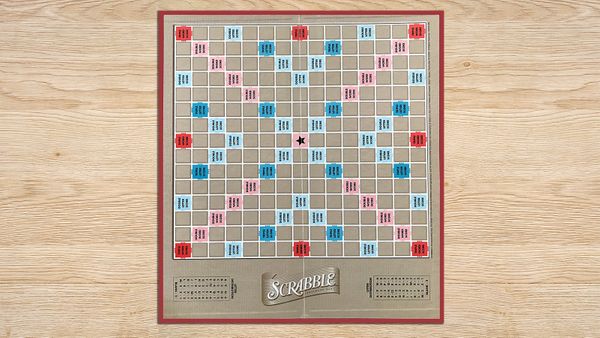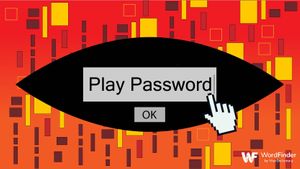How Many Squares Are on a Scrabble Board?

Photo taken by Beth Wiggins for WordFinder
One Big Scrabble Board
In short, the Scrabble board is so big because it needs to accommodate the game. Scrabble and Words With Friends both make long plays possible with their 225 squares. Played on a chessboard, even the best, luckiest play in Scrabble could be no longer than 8 letters.
Part of the appeal of Scrabble and its inheritors is the possibility of turning luck and skill into huge, game-changing plays. It gives players the chance at a one-shot opportunity to turn things around, changing what would otherwise be a dry, skill-based exercise. Every aspect of Scrabble is about balancing luck and skill to maximize enjoyment.
Super Scrabble's Super-Sized Board
A standard Scrabble board, at 15 x 15 for a total of 225 squares, is already large enough to allow for some epic play. But what about Super Scrabble? That board is even bigger, for even more opportunities!
The Super Scrabble board consists of a 21 x 21 grid, making up for a total of 441 squares. That's almost twice as many squares as standard Scrabble or Word With Friends!
Bonus Squares in Scrabble
To fully grasp the nature of the 15 x 15 board, we have to break it down. Of the 225 Scrabble squares:
8 are triple word scores
17 (counting the center space where play begins) are double word scores
12 are triple letter scores
24 are double letter scores.
That means 61 squares - more than a quarter of the board - will score you more than the face value of the letter. The large proportion of bonuses to ordinary spaces creates opportunities for big swings in score and keeps most games competitive until the last few moves.
Tips for Big Plays
Ultimately, of course, every tip we've ever given about how to play Scrabble was about mastering that 15 x 15 board. At the same time, some advice applies to the board itself.
Think Zero Sum
There is no such thing as a neutral square. Every one of those 225 squares is either helping you or it's helping your opponent. Envision the board with that in mind. Take bonuses. Block opportunities. Scrabble is as much about chess-style space management as about comparing vocabularies.
Long Early, Short Late
Playing long words early is often wise. Long words open up future opportunities, and playing early lowers the probability of your opponent making a big play you can't answer. Better, they let you plan steps in advance, working out how to claim whole chunks of the board for yourself.
Use It or Destroy It
Victory in Scrabble, as in chess or go, is about denying your opponent opportunities, forcing them to play your way. Those 61 bonus squares? If you can't use them, play to make them as inaccessible as possible. Close off scoring opportunities you can't use yourself. Don't hope for future opportunities. Hope is not a strategy. Use everything you can. Obstruct or complicate everything you can't.
Fun With a Board and Some Rocks
The oldest board games (which were darn near indistinguishable from backgammon, by the way) go back over 5,000 years. Other things that are 5,000 years old include Stonehenge and the concept of money. Scrabble and its kindred would have to wait a bit on account of no one had invented an alphabet yet.
Been a while, we're saying. The idea of dividing a board into spaces, counting them up and pitting minds against minds is one of the oldest living human pastimes. Every time you squint at a scattering of tiles and spell in your head, looking for the optimal placement, you're taking part in living history. Laying a letter in any one of those 225 spaces is an act of living history. Plus, it's fun.
Matt Salter has been a professional writer for over 10 years. He is a gaming and technology expert, and world-class word nerd.



